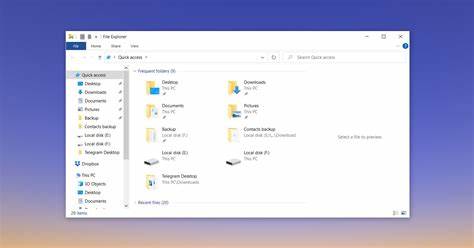Open File Explorer:
Click on the folder icon in the taskbar or press the Windows key + E to open File Explorer.
Navigate through folders:
Use the left pane to navigate through different folders and drives on your PC. Click on a folder to view its contents in the right pane.
Create a new folder:
To create a new folder, right-click in the right pane and select “New” > “Folder.” Give the folder a name and press Enter.
Move or copy files:
To move or copy files, select the file(s) you want to move or copy, right-click, and select either “Cut” or “Copy.” Navigate to the destination folder, right-click, and select “Paste.”
Delete files:
To delete files, select the file(s) you want to delete, right-click, and select “Delete.” You can also press the Delete key on your keyboard.
Rename files:
To rename a file, select the file, right-click, and select “Rename.” Type in the new name and press Enter.
Search for files:
Use the search bar at the top-right corner of File Explorer to search for specific files or folders. Simply type in the name or keywords related to the file you’re looking for.
Sort and arrange files:
Click on the column headers in the right pane to sort files by name, date modified, size, etc. You can also right-click in the right pane, select “Sort by,” and choose a sorting option.
Create shortcuts:
To create a shortcut to a file or folder, right-click on the file or folder, select “Create shortcut,” and a shortcut will be created in the same location.
Customize File Explorer:
Click on the “View” tab at the top of File Explorer to customize how files and folders are displayed. You can choose different view options, such as “Details,” “List,” “Tiles,” or “Content.”
Use Quick Access:
Quick Access is a feature in File Explorer that displays frequently accessed folders and recently accessed files. You can pin folders to Quick Access by right-clicking on a folder and selecting “Pin to Quick Access.”
Manage file properties:
Right-click on a file, select “Properties,” and a window will open with information about the file, such as its size, location, and file type. You can also add tags or edit other properties in this window.
These are just some of the basic features and functions of the Windows 10 File Explorer. Experiment with different options and settings to find a file management and organization system that works best for you.
Bye for now.

